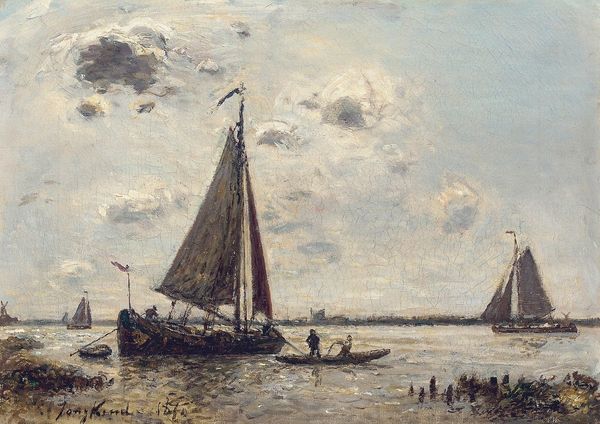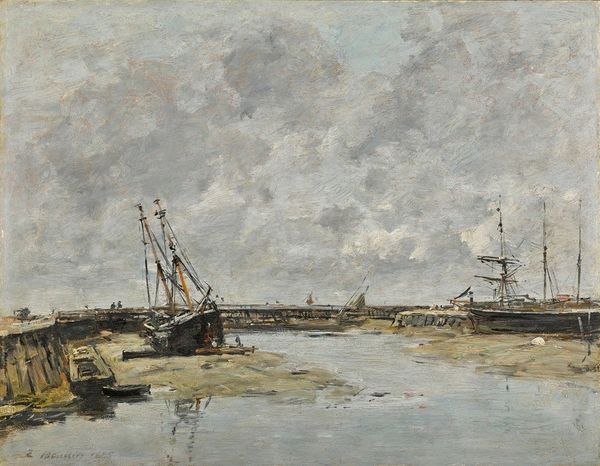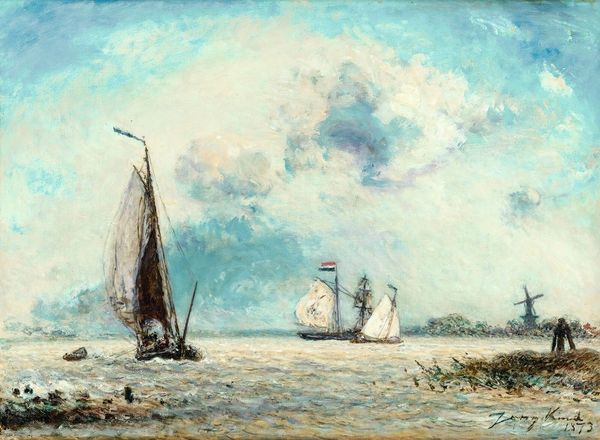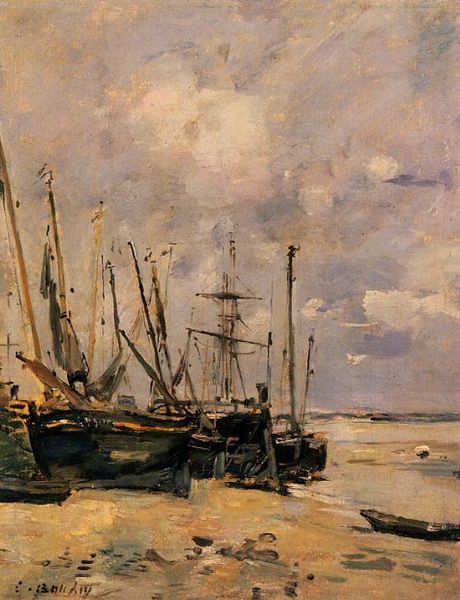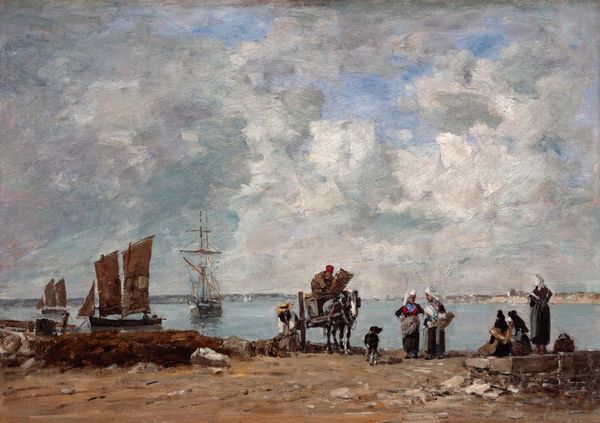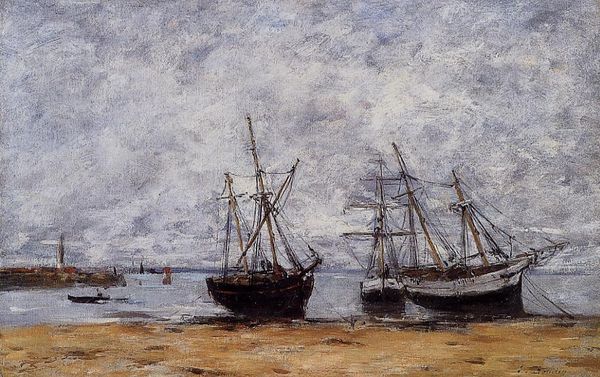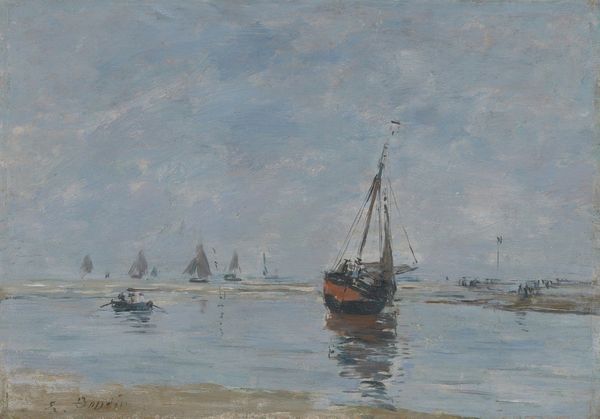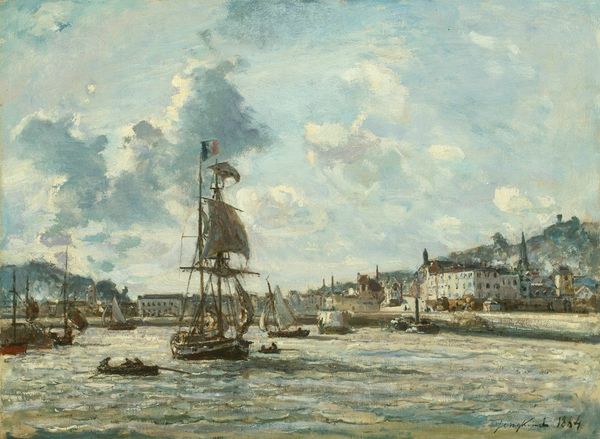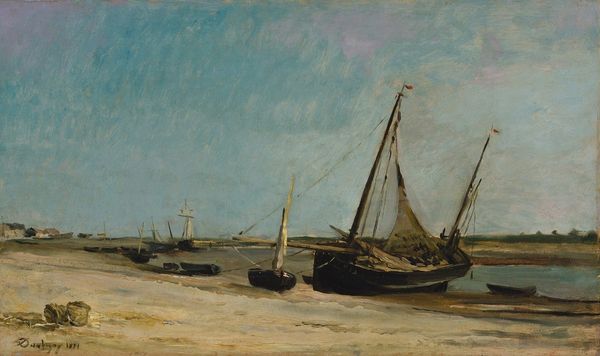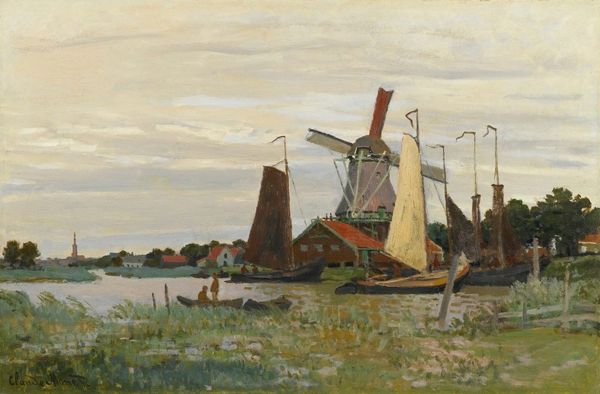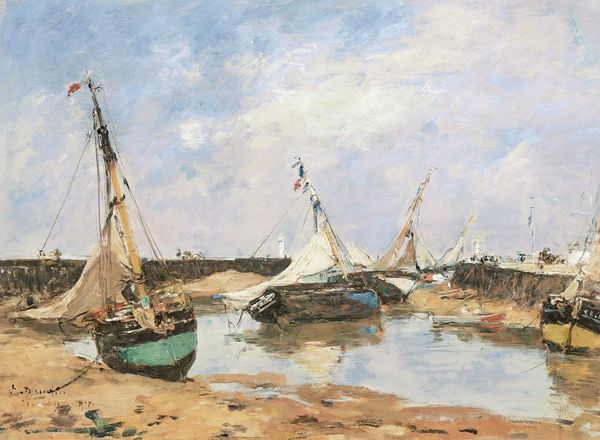
Copyright: Public Domain: Artvee
Editor: This is Johan Barthold Jongkind's "L’Estuaire, Belgique," painted in 1867 using oil on canvas. The sky and water blend together in such a hazy way that it creates a feeling of distance and melancholy. What story does this Estuary tell you? Curator: This work speaks volumes about the evolving relationship between art and industry in the 19th century. Jongkind, a forerunner to Impressionism, depicts a scene vital to burgeoning trade routes. Notice how the loose brushstrokes and attention to light, especially evident in his Plein-air method, soften the presence of what would have been bustling commercial activity. How do you perceive that decision, stylistically? Editor: I see how his stylistic choices reflect a shift, maybe away from glorifying industry and towards capturing a fleeting experience of a place, almost a tourist's impression. Curator: Precisely! And who are the paintings really "for"? Consider who now is starting to possess the leisure and purchasing power to own these intimate "impressions" of places. The image normalizes the maritime scene but democratizes the art object. What might have previously been viewed through a highly controlled "Academic" eye now feels available for individual connection, or private collection. Editor: So, his art is influenced by changes in economics and class structure of the time? Curator: Absolutely. The art market itself was being reshaped, offering opportunities for artists to break free from the traditional Salon system and connect with a broader, often middle-class, audience eager for new representations of the world. Editor: I see a narrative about societal shifts played out through artistic style. Thanks, that really clarified how much socio-political information is captured in this one frame! Curator: My pleasure. Keep observing those quiet details, and they will keep speaking.
Comments
No comments
Be the first to comment and join the conversation on the ultimate creative platform.
